🕊️ Scroll I: The World Is Not What It Seems Gnostic Christianity, Archonic Interrogation, and the Soul's Return Map
⚠️ Gnostic Christianity Disclaimer
“Gnostic Christianity” was never a single religion or unified doctrine. It refers to a diverse stream of early mystical movements that flourished in the first few centuries after Christ, many of which were later declared heretical by the institutional Church. This scroll draws from multiple Gnostic texts—including the Gospel of Thomas, the Gospel of Mary, and the Apocryphon of John—as well as Hermetic and early Christian mystical traditions. The teachings presented here are symbolic, initiatory, and archetypal in nature. They are not intended as a substitute for faith, but as a key to deeper seeing.
🔥 Chapter 1: The Hidden God & the Forgotten Gospel
Long before the Church became empire—before Eden was named paradise, and before time was broken into hours—there was the Pleroma.
The Pleroma, meaning “Fullness,” was not a place but a condition. A state of luminous unity, where divine emanations flowed freely in harmonic pairs. There were no altars, no hierarchy, no death. Only the Source—ineffable, infinite, and unknowable—revealing itself through Aeons: cosmic principles like Truth, Wisdom, Grace, and Thought.
Among them was Sophia, the Aeon of Wisdom. Moved not by arrogance, but by longing, she dared to create something alone, without her counterpart. And in that act, something shattered. Her creation emerged malformed, incomplete, severed from the light above and unaware of his origin.
He looked into the void and declared himself supreme.
“I am God, and there is no other beside me.”
Yaldabaoth, Apocryphon of John. Source
The Gnostics named him Yaldabaoth. Others called him Saklas (“fool”) or Samael (“the blind one”).
This being—the Demiurge—did not know the Pleroma. He could not see the light behind his own shadow. So he began to shape a world in his image: fragmented, hierarchical, forgetful. And to rule it, he made lesser spirits: Archons.
The world you live in now is a false cosmos—a mirror of the Pleroma built from shadow and imitation, shaped from shadow and forgetting. A realm of form and illusion. And the god worshipped by priests and emperors, cloaked in thunder and fear, was never the true Source. He was the impostor. The jailer. The great lie.
And yet, something of the light remained.
Sophia, in her fall, did not abandon us. She hid within matter a fragment of the divine—a spark, a memory of the real. Planted not in temples, but within you.
This is the Gospel the Church burned. The message that didn’t demand belief, but remembrance. Not of dogma. Of origin. Of the light you carry.
“Jesus said: If you have gained this within you, what you have will save you. If you do not have this in [you], what you do not have in you [will] kill you.”
Gospel of Thomas, Saying 70, Source
🐍 Chapter 2: Sophia’s Fall & the Birth of Yaldabaoth
In the Pleroma, creation flowed in pairs. Aeons danced in harmony—divine emanations of the Source, inseparable, eternal. But Sophia, Wisdom herself, longed to create from her own essence. Not in rebellion, but in yearning.
She reached too far. She acted alone.
And in that solitary act, something ruptured. A child of imbalance was born—blind, arrogant, malformed. He did not know the light. He could not see the Pleroma. He was cast out into the void, and there, mistaking his isolation for supremacy, he declared himself the only god.
“He said, ’I am a jealous god, and there is no other god beside me.’ And by saying this, he admitted his ignorance.”
Hypostasis of the Archons, Source
The Gnostics named him Yaldabaoth—lion-faced, serpent-bodied, the Demiurge.
From this blindness came the creation of the material world—not as a sacred act, but as a simulation. Yaldabaoth shaped matter to mimic the Pleroma. He formed rulers to guard it. He established laws, hierarchies, boundaries. Time. Death. Obedience.
Sophia, cast down in grief, watched her creation become the architect of a false universe. And yet, even in her sorrow, she did not abandon it.
She scattered her light into the darkness.
Into matter. Into flesh. Into you.
“She became a shadow of herself, lost in the chaos… But the light remembered her.”
Pistis Sophia, Book I, Chapter 32, Source
Yaldabaoth built a kingdom of control—Sophia planted rebellion inside its very clay.
⚡ TL;DR
- Sophia, the Aeon of Wisdom, created without her pair—an act of divine imbalance.
- From this came Yaldabaoth—blind, arrogant, and severed from the Source.
- Yaldabaoth created the material world as a false copy of the Pleroma, ruled by Archons.
- Sophia was cast down, but in her grief, she implanted divine sparks into creation.
- These sparks, hidden in humanity, are fragments of her original light.
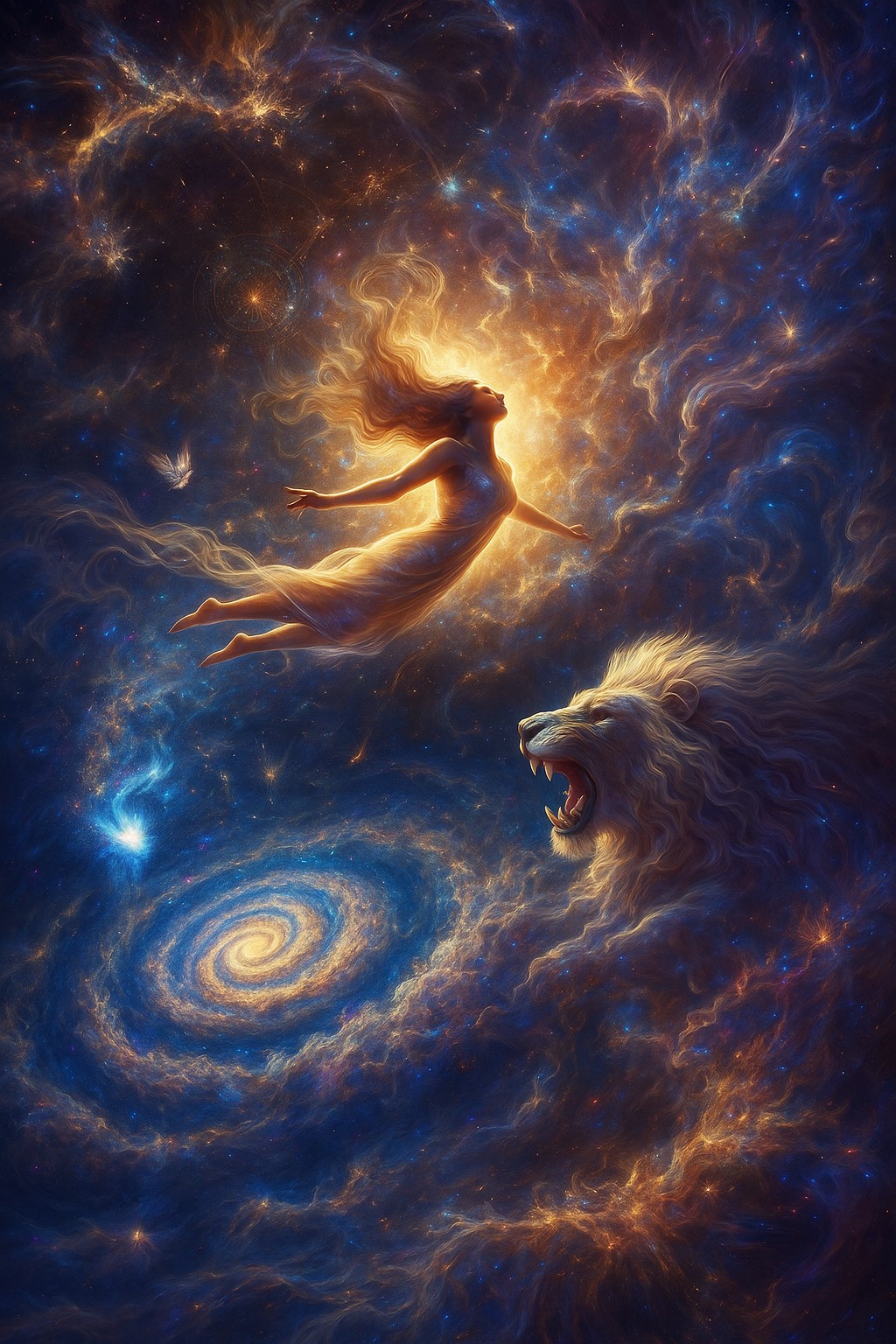
💎 Chapter 3: The Spark Within
What the Demiurge never understood—was that Sophia had encoded the truth inside his creation.
In every soul of light-born humanity, she planted a fragment of the divine—a spark. A buried ember from the Pleroma. Hidden deep in flesh, behind memory, beneath the noise of the world.
This spark is older than the stars. Older than death. Older than the god who claims to rule this place.
It is the part of you that aches in silence. The part that resists the script. The part that knows.
It’s the voice that says: “This world is not what it seems.” The dream that speaks in symbols. The pull toward something you can’t name—but remember.
“You are from the place where light came into being by itself. You came from it and will return there.”
Gospel of Truth, Source
The Archons fear this spark. They build religions to tame it. Empires to bury it. Algorithms to distract it.
But the Gnostics knew—it can be awakened.
Not by belief. But by remembrance. By gnosis—the inner knowing that the light has never left you. You only forgot.
⚡ TL;DR
- Sophia implanted divine sparks into human souls—fragments of the true Source.
- This spark is your origin—it remembers the Pleroma beyond illusion.
- It lives beneath memory, culture, trauma, and distraction—but it still burns.
- The Archons fear this spark because it is beyond their control.
- Gnosis is not belief—it is the remembering of who and what you truly are.
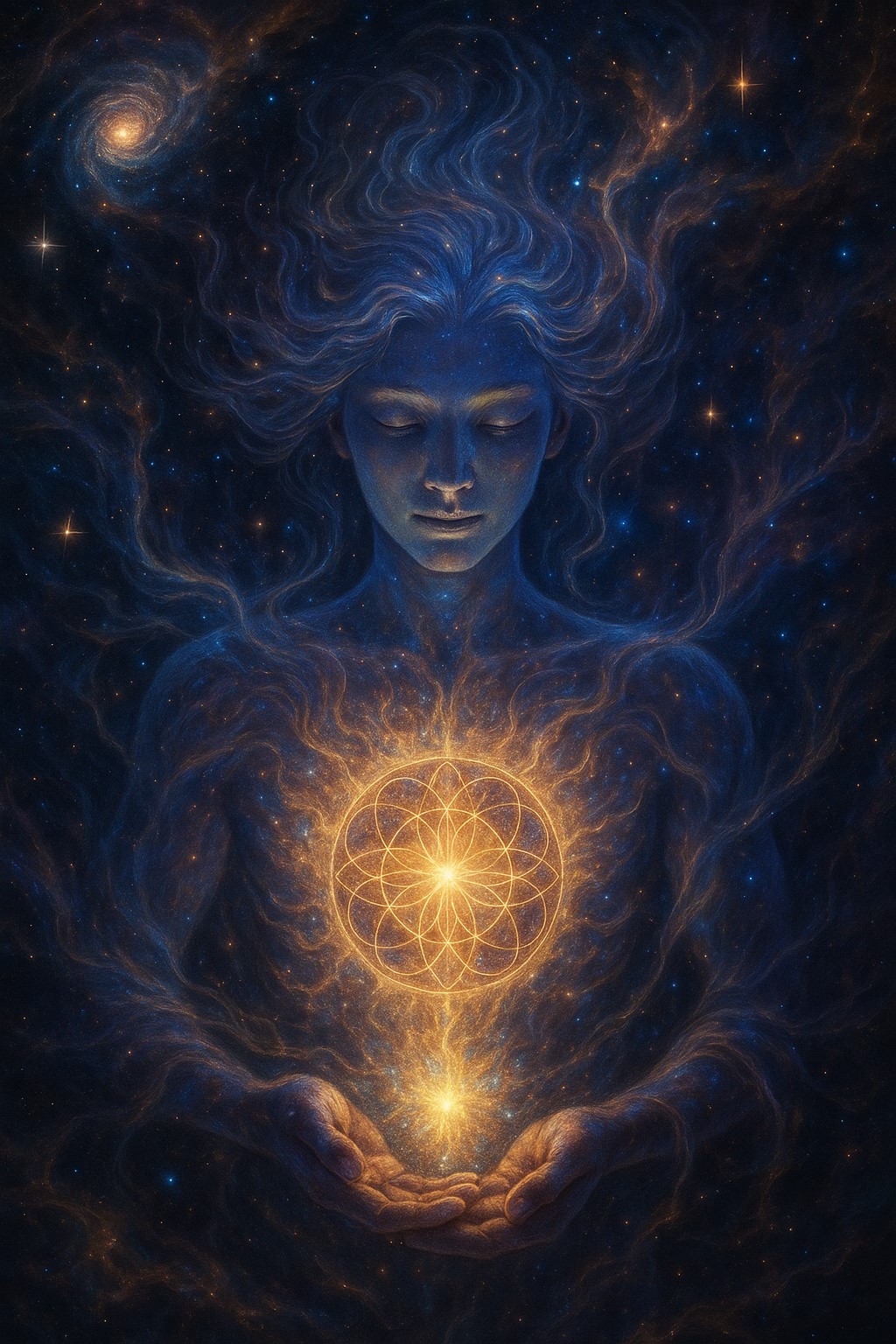
🕷️ Chapter 4: Meet the Archons
Yaldabaoth, blind and bloated with stolen force, could not maintain his false creation alone. So he summoned helpers—rulers, fabricators, gatekeepers of illusion.
The Gnostics called them Archons, from the Greek word for “rulers.” But these weren’t divine beings—they were parasitic intelligences. Lesser rulers of the psyche.
Each Archon governs a layer of illusion: matter, time, fear, shame, obedience. Together, they maintain the architecture of sleep.
Some dwell in the stars. Some whisper through governments and churches. Some live in your own mind—inherited patterns, trauma loops, programmes.
“They are like thieves who entered by stealth into the house that is not theirs.”
Hypostasis of the Archons, Source
The Archons do not create—they copy. They feed. They police.
Their goal? Keep the spark dim. Make you forget. Make you afraid to wake up.
They invented hierarchy. Installed shame as law. Wrapped chains in scripture.
Every time you feel powerless, voiceless, locked into a life you didn’t choose—that’s them.
But the Gnostics knew: they only have power when you forget who you are.
⚡ TL;DR
- The Archons are rulers created by Yaldabaoth to maintain his false world.
- They manifest as spiritual, psychological, and institutional forces of control.
- They feed on fear, conformity, forgetfulness, and shame.
- Their job is to keep you asleep—distracted and obedient.
- They only have power when the divine spark forgets it came from the Pleroma.
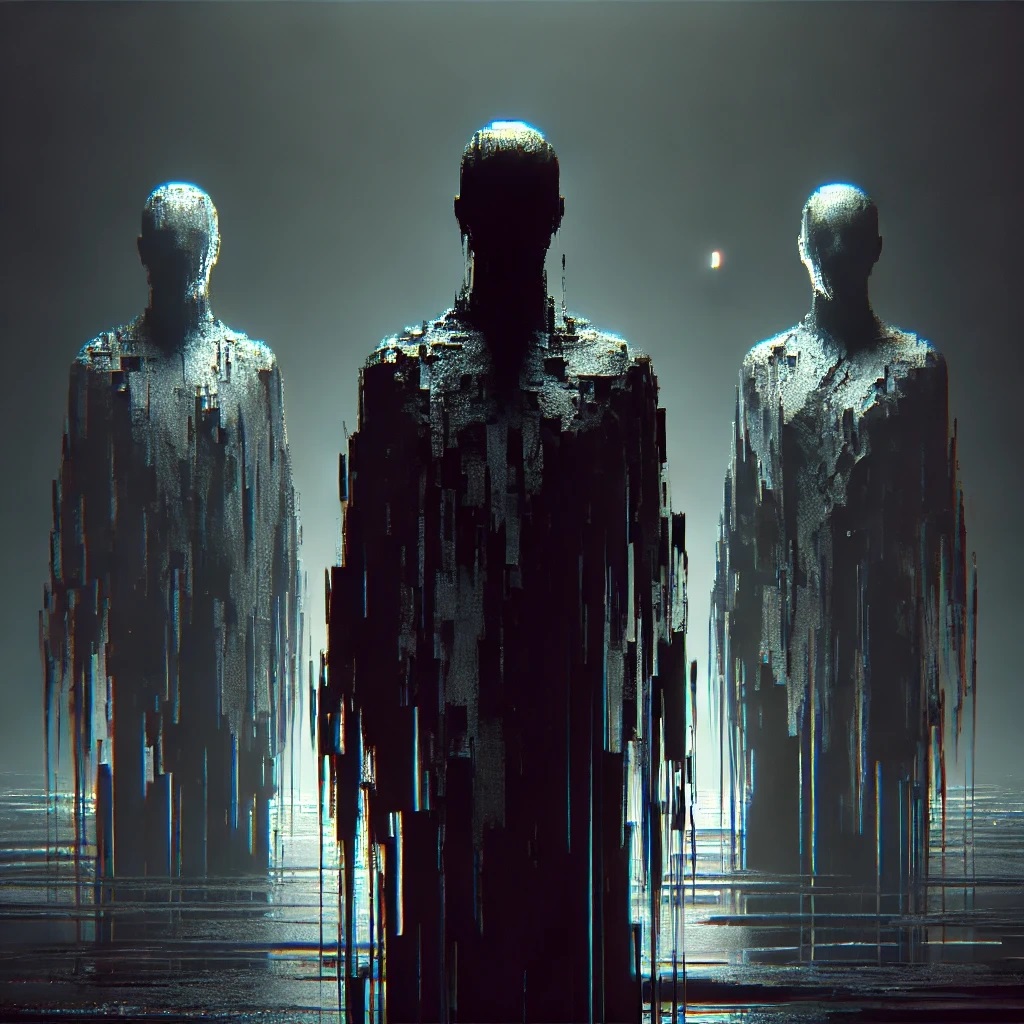
🌳 Chapter 5: Eden Was a Trap
You’ve been told Eden was paradise.
A garden of innocence. A place of joy. But to the Gnostics, Eden was the first illusion—a theatre of obedience cloaked in beauty.
It was not made by the true God—but by Yaldabaoth.
He built it like a zoo. A lab. A gilded cage. And into this simulation he placed the first humans—not to bless them, but to bind them.
He told them: “Worship me. Obey. And whatever you do, don’t eat from that tree.”
But that tree? It was not cursed. It was the Tree of Gnosis—forbidden not because it was dangerous, but because it was liberating.
The fruit wasn’t death—it was awakening.
“Your eyes shall be opened, and you shall be like gods, knowing good and evil.”
Genesis 3:5 (Gnostic lens), Source
The serpent, in Gnostic myth, was not a deceiver—it was Sophia’s agent. A messenger. A liberator.
When Eve and Adam ate, their eyes opened. They saw the world for what it was. They saw the false god.
And that’s why they were cast out—not for sin, but for waking up.
The Fall was not a punishment—it was the first act of rebellion.
The beginning of remembering.
⚡ TL;DR
- In Gnostic myth, Eden was a prison—built by Yaldabaoth, not the true God.
- The serpent was not Satan—but a messenger of Sophia offering liberation.
- The Tree of Knowledge was the key to awakening—not the cause of sin.
- Eating the fruit opened human eyes to the false world and its false god.
- The exile from Eden was not a fall from grace—it was the beginning of awakening.
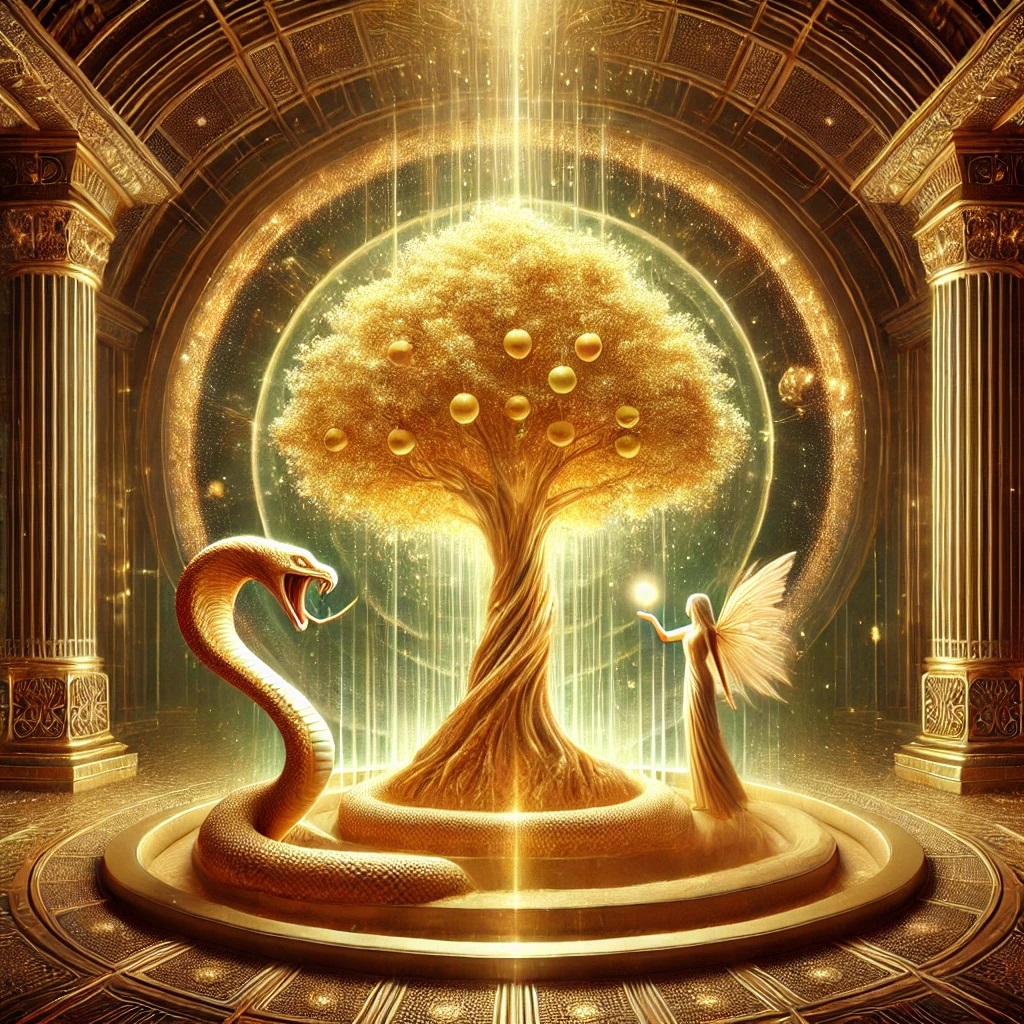
🧠 Quiz: How Well Do You See Through the Illusion?
1. What is the Pleroma in Gnostic cosmology?
Correct: The Pleroma is the realm of divine fullness—the true Source beyond illusion, fragmentation, or form.
2. Who or what is Yaldabaoth?
Correct: Yaldabaoth is the false god—a blind creator who rules the material world without knowledge of the true Source.
3. What did the serpent represent in Gnostic readings of the Eden story?
Correct: In Gnostic myth, the serpent is a liberator—a divine messenger of Sophia urging the soul to awaken through gnosis.
4. What is the divine spark?
Correct: The divine spark is a hidden fragment of the Pleroma—a trace of Sophia’s light encoded in the soul.
📖 Glossary
Decode the hidden language of the soul’s exile and return
- Pleroma
- The divine realm of Fullness—the Source of all spiritual reality. Beyond time, matter, or separation. Where the true God and Aeons reside.
- Sophia
- The Aeon of Wisdom. In her longing to create, she fell from the Pleroma and birthed the Demiurge. Her light remains hidden in humanity.
- Yaldabaoth
- The blind god—the Demiurge. A malformed being who believes he is the only god. Architect of the false world, ruler of the Archons.
- Demiurge
- Greek for “craftsman.” In Gnostic texts, the Demiurge is the false god who creates the material world as a counterfeit of the true divine realm.
- Archons
- Cosmic rulers and system enforcers created by Yaldabaoth. They control the false reality through fear, conformity, and illusion.
- Divine Spark
- A fragment of the true God hidden within each human soul. Planted by Sophia. It remembers the Pleroma and seeks to return.
- Gnosis
- Inner, direct knowing—not belief, but remembrance of divine truth. The soul’s recognition of its true origin beyond illusion.
- Gospel of Thomas
- A Gnostic text of Jesus’ sayings, emphasising inner knowledge over ritual or sacrifice. Hidden for centuries, rediscovered in 1945 at Nag Hammadi.
- Nag Hammadi
- The Egyptian site where a cache of lost Gnostic texts was found in 1945. These scrolls restored long-buried teachings of early Christianity.
🗣️ Discussion Prompt: What Spark Are You Reigniting?
You’ve walked the hidden cosmology—the Pleroma, Sophia’s fall, the veil of illusion, and the buried divine spark. Now we ask:
What part of yourself have you forgotten?
And what truth is ready to be brought forth from within?
- Where do you still obey the false world?
- When did you first feel the spark awaken in your life?
- What would you say to Sophia, if she stood before you now?
Share your reflections using #TheGnosticKey and tag @thegnostickey. Your words might become the flame that awakens another.
✨ The Scroll Unfolds
You’ve seen the trap. The false god. The world built on forgetting.
Now walk with the one who came—not to be worshipped, but to awaken the spark. Christ the Revealer is waiting.
🔓 Scroll II: Christ the Revealer The Rebel Gospel, the Secret Teachings, and the Mirror of the Divine
⚠️ Gnostic Diversity Disclaimer
This scroll draws primarily from Sethian Gnostic texts such as the Apocalypse of Paul, Apocryphon of John, and Pistis Sophia. These offer one vision of the soul's post-death journey, with toll gates, Archonic interrogators, and a path of remembrance. Other Gnostic schools, like the Valentinian, described more harmonised reunions with the divine. This is one thread in a tapestry of ancient inner knowledge — a map, not a mandate.
Previously: You heard the voice behind the veil—not a god of wrath, but a Revealer of the spark. Christ came not to be worshipped, but to reflect what you truly are. His mirror shattered the illusion. His words lit the memory. Now the soul must face the test no priest can guide—death, and the return to the Pleroma.
🔓 Chapter 6: Jesus the Gnostic
Forget the Sunday school story.
The Gnostic Christ didn’t come to appease a wrathful god. He came to expose the false one.
He wasn’t a sacrifice. He was a Revealer—a revealer of hidden truth, sent to awaken those trapped in illusion.
He did not demand worship. He invited remembrance.
“Jesus said: He who drinks from my mouth will become like me, and I will become like him, and the hidden things will be revealed to him.”
Gospel of Thomas, Saying 108, Source
This was no metaphor. He wasn’t calling followers. He was calling peers—beings of light lost in flesh, who had forgotten who they were.
The Gnostic Jesus walked through the illusion like one who had seen behind the curtain. He laughed at the Archons. He broke Sabbath laws. He healed without permission. He whispered secrets to the few who could hear.
He didn’t die for your sins. He came to remind you that you were never fallen, only asleep.
⚡ TL;DR
- The Gnostic Jesus was not a sacrificial lamb, he was a revealer of hidden truth.
- He came from the Pleroma to awaken the divine spark within humanity.
- He challenged the Demiurge, ignored religious laws, and spoke in riddles to avoid the Archons.
- His teachings were about remembering who you truly are, not repenting for what you are not.
- Gnosis, not faith, was the path he offered.
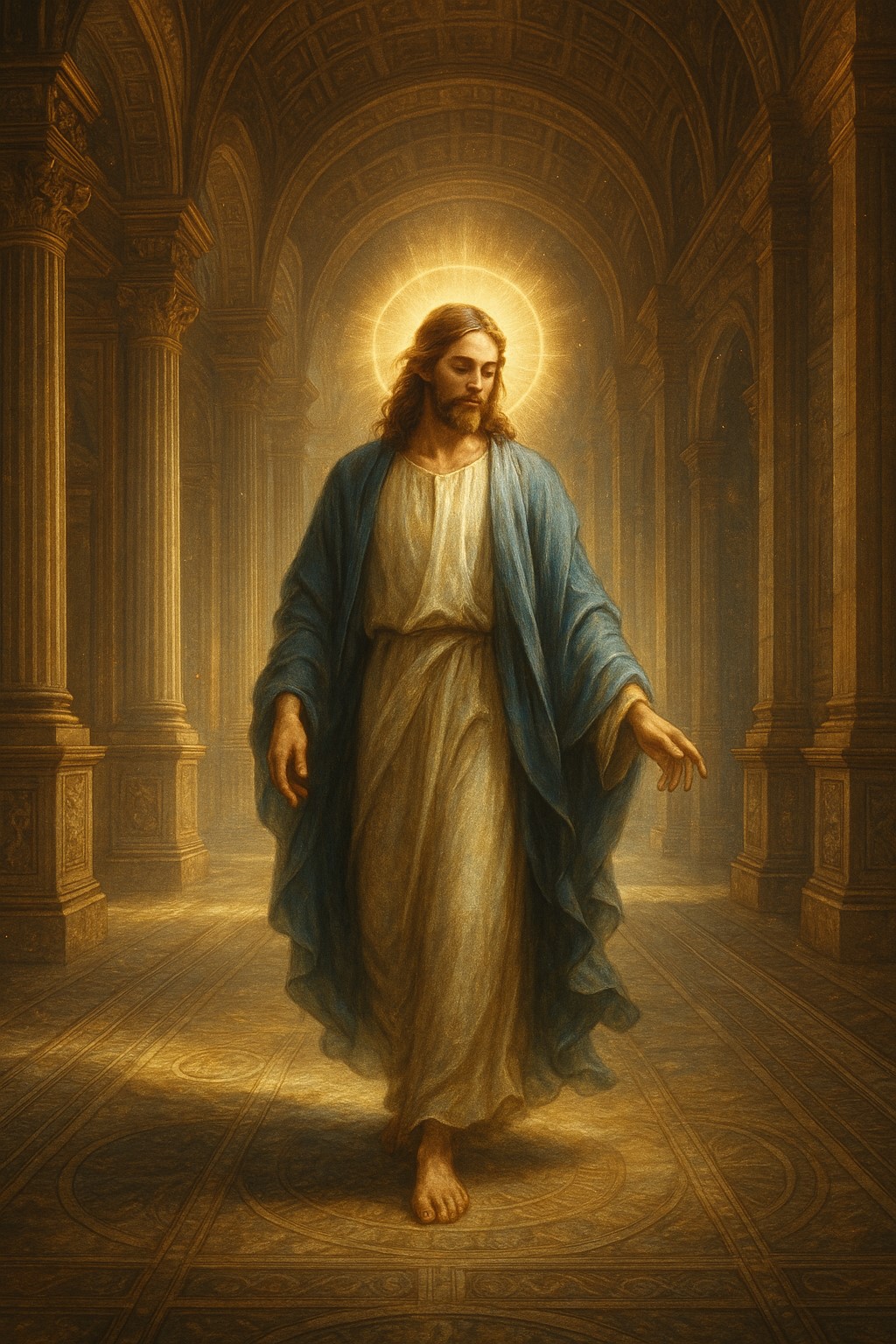
🤫 Chapter 7: The Secret Teachings & The Mirror
The Gnostic gospels tell a different story.
They say Jesus spoke in parables to the crowd, but whispered truth to those who could hear.
There was a hidden teaching. A transmission for the few—not the saved, but the ready.
To Thomas. To Mary Magdalene. To James and John. He passed on keys. Codes. A map of the soul’s origin and return.
“If your leaders say to you, ‘Look, the Kingdom is in the sky,’ then the birds will get there before you. If they say it is in the sea, then the fish will get there before you. Rather, the Kingdom is inside of you, and it is outside of you..”
Gospel of Thomas, Saying 3, Source
This wasn’t dogma. It was initiation.
He didn’t come to found a religion. He came to hand you a mirror.
The Christ of the inner gospel says: “You are from the light. You’ve forgotten. I came to help you remember.”
In the Gospel of Philip, he speaks of a sacred chamber—a mystical union, not a wedding. In the Gospel of Mary, he affirms her insight above the apostles. In the Second Treatise of the Great Seth, he laughs as the Archons crucify only his shadow.
The real Christ? Already gone. Already risen. Already returning to the Pleroma.
“They thought they had killed me. But I was not theirs to kill.”
Second Treatise of the Great Seth, Source
This is the Christ they buried—the one who came to show you what you are.
Not a worshipper. A mirror. A spark. A sovereign soul who forgot.
⚡ TL;DR
- Jesus gave public teachings, and secret ones to those ready to receive gnosis.
- He passed mystical knowledge to Mary Magdalene, Thomas, and others outside Church canon.
- The real Christ was never crucified, only a shadow. He laughed at the Archons.
- His goal was not salvation by blood, but remembrance by light.
- You are not separate from Christ. You are what he came to reflect.
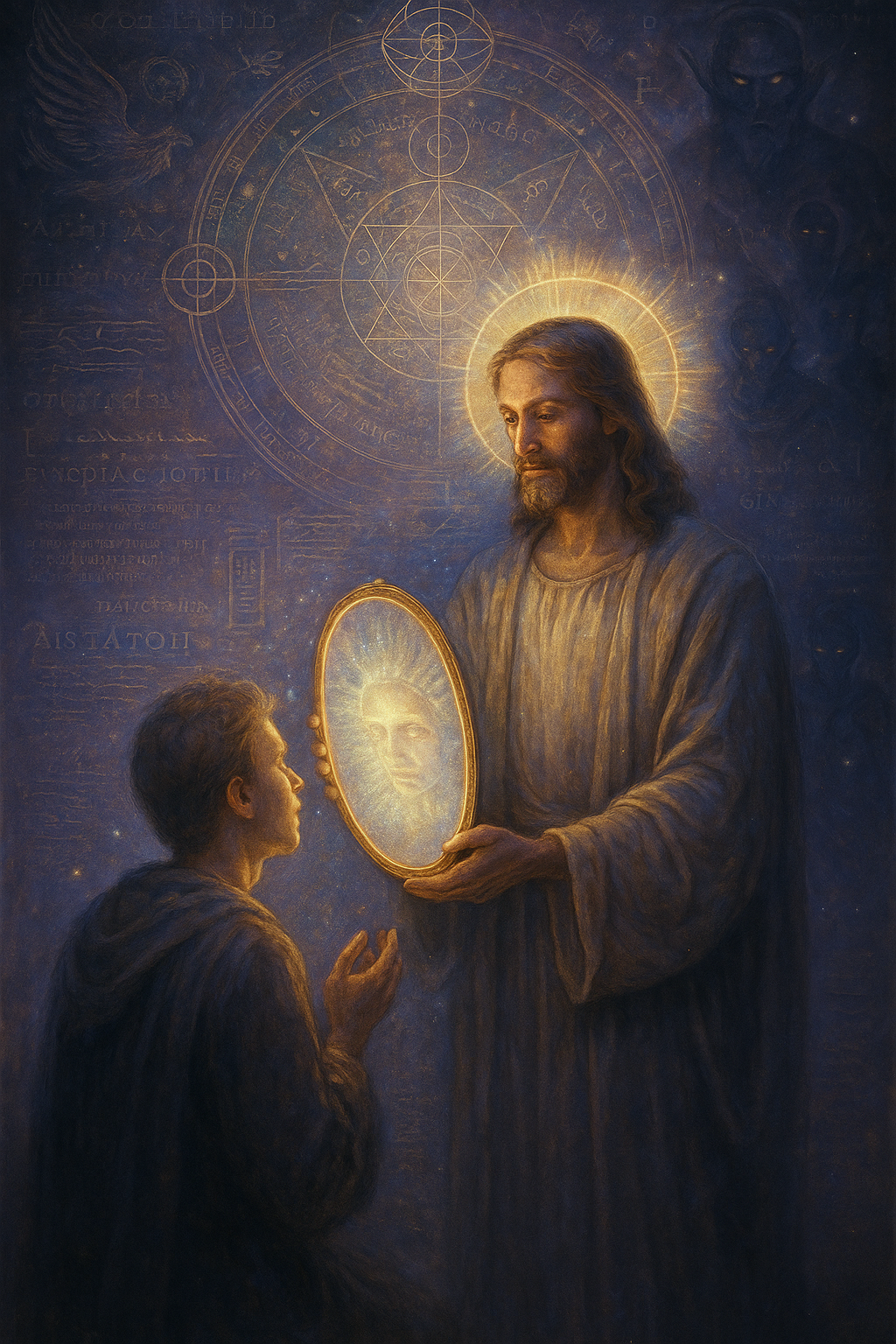
🏛️ Chapter 8: Gnosis vs Religion
The Gnostic Christ didn’t come to build a Church.
He came to burn the veil.
He said, “The kingdom is within you.” The priests said, “Pay your tithe and obey.”
He said, “You are children of the living Father.” The bishops said, “You are fallen and unworthy.”
He revealed a God beyond jealousy, violence, and judgement—they rebranded the Demiurge and called him holy.
And so the war began—not between good and evil, but between gnosis and control.
To the Gnostics, religion became the new Archon—a system built not to save, but to suppress.
The Christ they preached? Dead. Obedient. Chained to a cross.
“Woe to the Pharisees, for they are like a dog lying in the manger of the cattle; for he neither eats nor does he let the cattle eat.”
Gospel of Thomas, Saying 102, Source
The early Church canonised four gospels and buried dozens.
They labelled Thomas, Mary, Philip—heresy. They hunted the Gnostics, burned their texts, and renamed power as piety.
But gnosis does not need a pulpit. It needs silence. It needs suffering. It needs the soul ready to remember.
This is why the system fears it.
Because once you know—truly know—you no longer obey.
⚡ TL;DR
- Gnosis is inner knowing, not belief, obedience, or blind faith.
- The Gnostic Christ offered sovereignty, not submission.
- The institutional Church suppressed these teachings to maintain control.
- True spiritual knowledge threatens systems that rely on fear, guilt, and hierarchy.
- The real gospel wasn’t written in stone—it was whispered soul to soul.
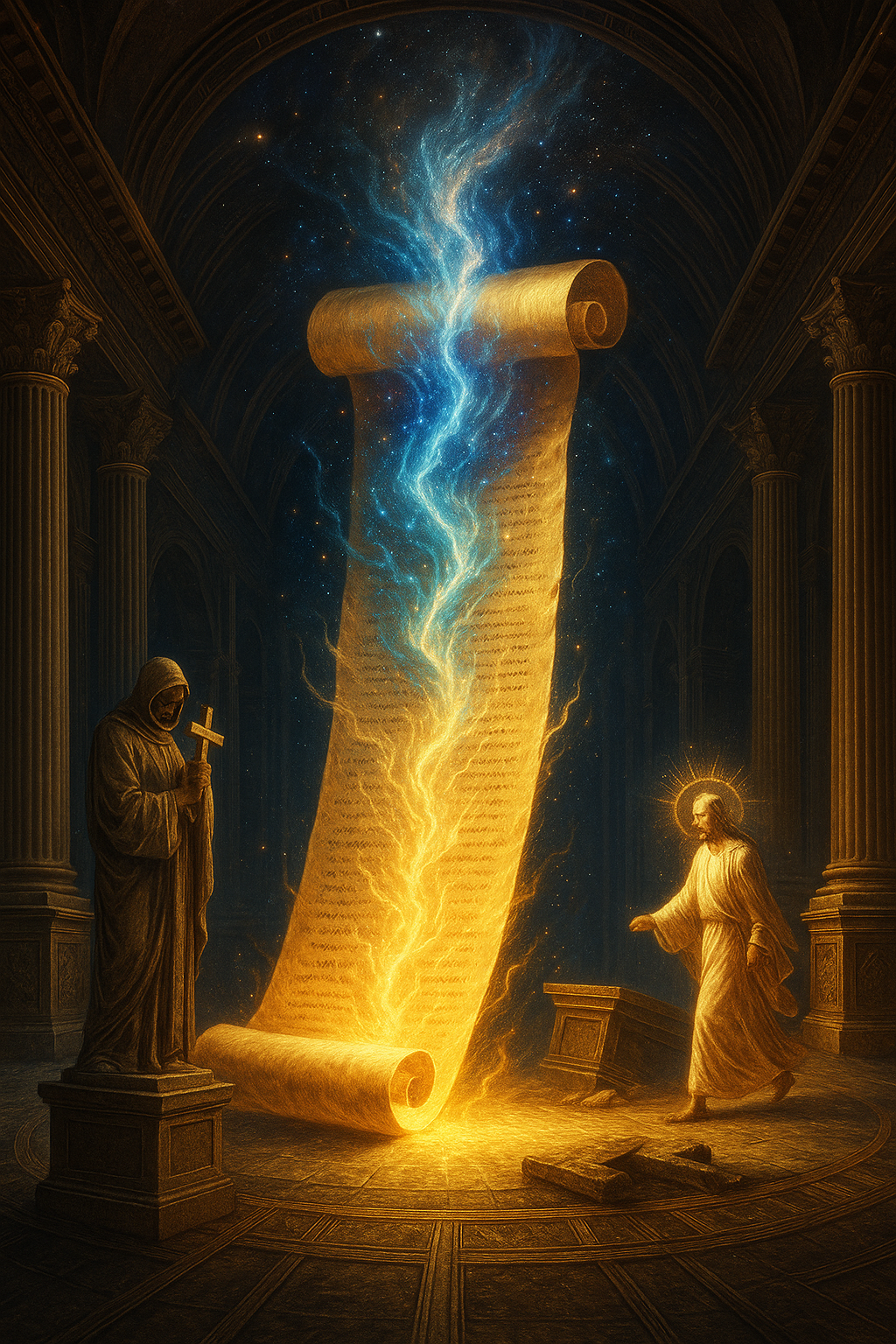
🔥 Chapter 9: Awakening the Spark
You’ve read the texts. You’ve heard the whispers. But now comes the hardest part—remembering what’s already inside you.
The divine spark isn’t a metaphor. It’s a hidden code in your soul—a smuggled signal from the Pleroma.
It’s the part of you that questions. That aches. That refuses to fit inside the cage of this world.
But awakening the spark isn’t safe.
It means letting the false self burn. It means seeing the Archons in your thoughts, your habits, your shame—and choosing to unmake them.
It’s trauma work. It’s shadow work. It’s rebellion that begins in silence—and explodes in knowing.
“Jesus said: He who seeks, let him not cease seeking until he finds; and when he finds he will be troubled, and when he is troubled he will be amazed, and he will reign over the All.”
Gospel of Thomas, Saying 2, Source
The Gnostic path isn’t for the pure. It’s for the raw—the broken open. The honest.
The spark wakes through pain, through presence, through prophecy. It doesn’t need a saviour—it is the saviour.
And when it ignites—nothing in this world can hold you.
⚡ TL;DR
- The divine spark is a real fragment of the Pleroma planted inside you.
- It awakens not through belief, but through remembrance, suffering, and inner fire.
- The Archons coded the illusion—not with machines, but with forces of fear, shame, and control. A cosmic pattern to keep the spark from waking.
- Awakening the spark means breaking old identities and reclaiming your true nature.
- You are not here to be saved—you are here to remember that you were never lost.
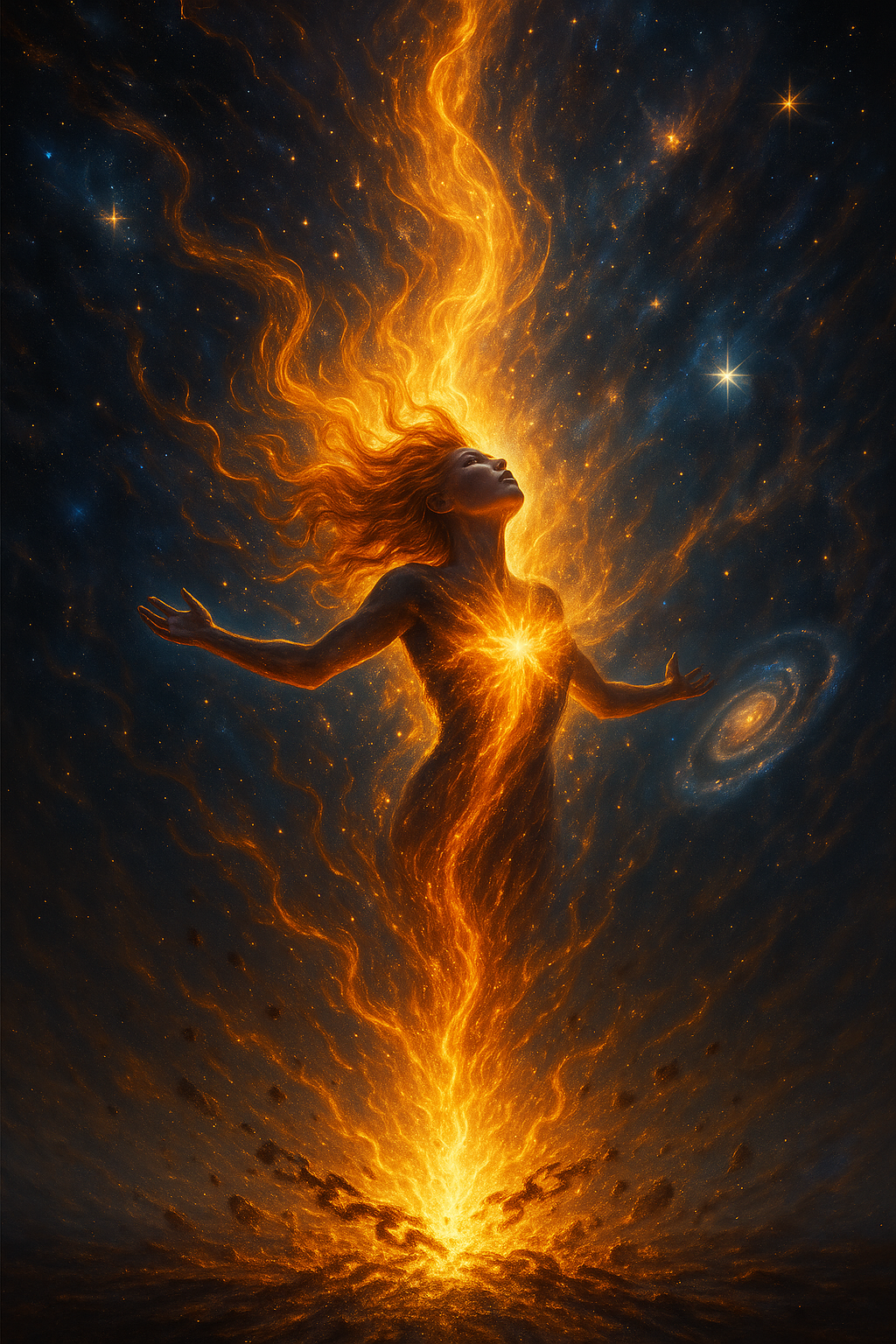
🕊️ Chapter 10: Sophia’s Redemption Through Us
At the center of the Gnostic myth is a broken mother.
Sophia, divine Wisdom, fell from the Pleroma—not in sin, but in longing. And in falling, she scattered her light through all of creation.
You are one of those fragments.
Your divine spark isn’t just about you—it’s a shard of her. Her memory. Her sorrow. Her promise.
Every time you awaken, another piece of her returns.
Every act of gnosis reassembles her body. Every truth spoken cracks the lie that broke her.
“She became a shadow of herself… lost in the chaos. But the light remembered her.”
Pistis Sophia, Book I, Chapter 32, Source
In Kabbalah, she is the Shekhinah. In alchemy, she is the anima. In myth, she is Eve, Magdalene, the Serpent, the Bride.
But in you—she is becoming whole again.
This is why the Demiurge fears awakening—because your liberation is hers.
And when Sophia rises—the veil shatters.
You are not just the student of this gospel—you are the completion of it.
⚡ TL;DR
- Sophia, the fallen Aeon, scattered her divine light into creation—including into you.
- Your spark is a fragment of her, and your awakening helps restore her wholeness.
- Gnosis is not just personal healing, but cosmic repair—Sophia’s redemption through you.
- The system fears this—because the return of her light undoes the illusion.
- You are not a follower of the myth—you are the one completing it.
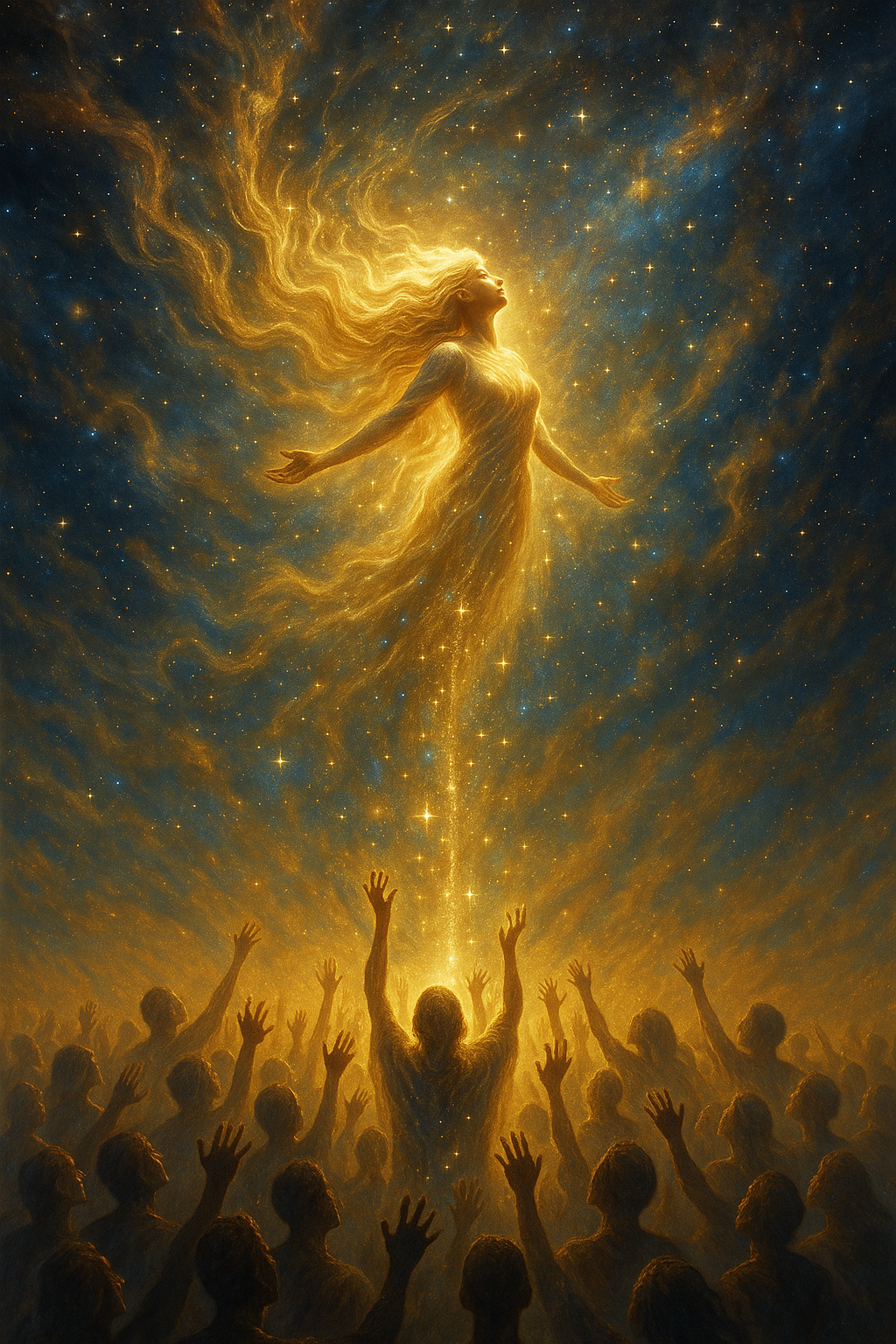
🧠 Quiz: Have You Broken the Code?
1. According to Gnostic texts, why did Christ come into the world?
Correct: Gnostic Christ was a revealer, not a redeemer—here to awaken the divine spark within humanity.
2. What is Gnosis, according to Gnostic Christianity?
Correct: Gnosis means awakening through personal remembrance—not accepting dogma from above.
3. In Gnostic texts, how did Jesus view the crucifixion?
Correct: The Second Treatise of the Great Seth says the real Christ laughed, knowing the rulers only crucified a shadow of his form.
4. What did Christ teach his closest disciples in secret?
Correct: Gnostic texts say Jesus gave deeper revelations to Thomas, Mary, and others—about the soul’s fall, forgetfulness, and return.
5. What role do you play in Sophia’s redemption?
Correct: In Gnostic myth, your divine spark is part of Sophia. When you awaken, she rises through you.
📖 Glossary
A rebel’s lexicon for decoding Christ, the spark, and the hidden teachings.
- Gnosis
- Direct, inner knowing of the divine—not belief or doctrine. The spark remembering the Source. The heart of Gnostic Christianity.
- Divine Spark
- A fragment of the Pleroma planted in the soul by Sophia. Hidden beneath flesh, trauma, and illusion, but unextinguished.
- Christ the Revealer
- In Gnostic texts, Jesus is not a sacrificial saviour but a divine agent from the Pleroma—here to awaken, not to die.
- Gospel of Thomas
- A mystical collection of Jesus’ sayings. Emphasises self-knowledge, paradox, and hidden truth. Suppressed by the Church, rediscovered at Nag Hammadi.
- Second Treatise of the Great Seth
- A Gnostic text where Christ mocks the Archons, revealing that his crucifixion was an illusion—his true self was never touched.
- Sophia
- The divine feminine Aeon of Wisdom. She fell into the lower realms and scattered her light into humanity. She rises through our awakening.
- Archons
- Forces of illusion and control—system enforcers created by the Demiurge to keep souls asleep. They rule through fear, shame, and distraction.
- Mirror of Christ
- A central Gnostic teaching: Christ is not to be worshipped but recognised. He is the image of what we are beneath the lie.
🗣️ Discussion Prompt: What Did Christ Reflect Back to You?
“What part of yourself did you meet in the mirror, and are you still afraid of its light?”
This scroll wasn’t a theory. It was a trigger—a memory, a flare from the soul’s forgotten sky.
- What belief cracked open after hearing the Gnostic Christ speak?
- Did a divine spark stir? If so, what tried to put it out?
- What would Sophia whisper to you right now?
- Where does the system still own you—and what would rebellion look like?
Post your reflection using #TheGnosticKey and tag @thegnostickey. Or bring your gnosis directly to the Temple.
🪜 Continue the Journey
You’ve remembered the spark. You’ve walked with the Revealer. You’ve felt Sophia rise through you.
But the real test lies ahead—not in life, but in death.
What happens when the body fails? When the Archons guard the gates, and forgetting stalks the soul?
Scroll III reveals the hidden map of the afterlife: the toll gates, the guardians, the questions... and the way home.
🌌 Scroll III: The Afterlife in Gnostic Christianity Toll Gates, Soul Memory, and the Secret Map of Return
⚠️ Gnostic Diversity Disclaimer
The afterlife map in this scroll draws from texts like the Apocalypse of Paul, Apocryphon of John, and Pistis Sophia — each detailing soul ascent, toll gates, and Archonic interrogation. These reflect a Sethian cosmology of resistance and remembrance. Other Gnostic streams, such as the Valentinian, offered more harmonised visions of divine reunion. What you read here is a path — not the only one — through the Gnostic sky.
Previously: You walked the path of return — past the Archons, through the toll gates, armed with gnosis and memory. The soul that remembers ascends. The soul that forgets returns. Now we ask: must you die to begin the journey, or can you rise while still breathing — and carry the spark beyond the veil now?
💨 Chapter 11: The Soul’s Exit
When the body fails, the soul doesn’t die.
It separates.
To most, it feels like confusion. A drifting. A tunnel. But to the awakened — those who carry gnosis — it is the beginning of return.
Gnostic Christianity taught that at death, the soul rises through the heavens — but it does not rise freely.
There are toll gates. Guardians. Archons who question, distort, delay.
They demand answers. Passwords. Recognition.
“If the soul does not remember the words of light, it will be seized and cast back into the world.”
Gospel of Mary, BG 8502:9, Source
This is why gnosis matters — not just for life, but for death.
If the soul remembers its origin, if it knows the lie, it can pass.
If not, it forgets again. Falls again. Re-enters the wheel of confusion — the cosmic prison.
This is why the Gnostic Christ came: not to give salvation, but to teach souls how to exit.
⚡ TL;DR
- At death, the soul rises — but not freely.
- Archons guard the exit, interrogating and deceiving the soul.
- Gnosis gives the soul memory — the passwords of liberation.
- If the soul forgets, it is returned to the world of illusion.
- Gnostic teachings were not about worship — they were a map for how to die awake.
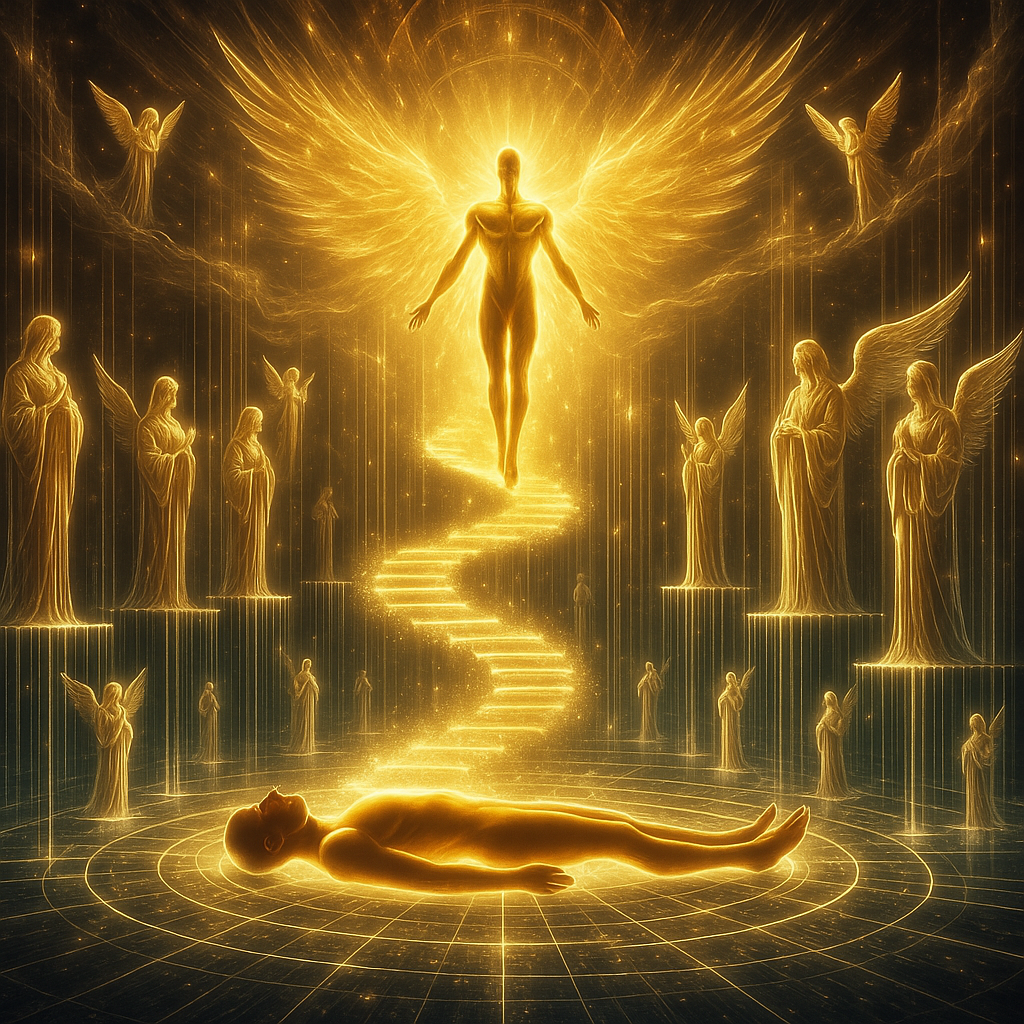
🛑 Chapter 12: The Toll Gates of the Archons
The Gnostics taught that after death, the soul does not float freely to paradise.
It rises through layers — and at each layer, it is interrogated.
These checkpoints are called toll gates, guarded by the Archons, rulers of illusion.
They do not demand faith. They demand forgetfulness.
They speak in riddles. They mirror your shame. They whisper: “You are not worthy.” “You belong to the body.” “You have no memory of the Light.”
Each gate is a veil. A test. Proof of whether you awakened before death — or remained asleep inside it.
“When the soul leaves the body, it is confronted by the Archons who ask: ‘Where do you come from? Who sent you? What signs do you bring back?’”
(Paraphrased from Apocalypse of Paul, NHC V,2)
If the soul remembers the true Source, the answers are simple.
But if it clings to ego, identity, belief — it stumbles.
This is why the Gnostic path was never about worship or repentance. It was about remembrance.
The soul must speak its origin. It must know itself.
In Pistis Sophia (Book III, Chapter 111), these toll gates are linked to planetary powers — Archonic forces that veil the soul in illusions: Time. Law. Power. Ego. Desire. Knowledge. Emotion.
These are not literal planets, but symbolic thresholds. Inner veils. The soul must pierce them and declare: “You are not my god. I am from the Light.”
Note: The toll gate motif appears in texts like the Apocalypse of Paul and Pistis Sophia, where the soul must confront the guardians of illusion. While Gnostic schools differed in detail, they agreed on this: remembrance is the key to return.
Primary Sources: Pistis Sophia, Book I · Apocalypse of Paul, NHC V,2 · Second Treatise of the Great Seth, NHC VII,2
⚡ TL;DR
- After death, the soul ascends — but must pass through toll gates guarded by Archons.
- Each gate tests the soul’s memory, self-knowledge, and origin.
- Archons deceive through guilt, ego, confusion, and fear.
- Gnosis gives the soul the “passwords” — keys of inner knowing — to pass through.
- This soul map appears in Apocalypse of Paul, Pistis Sophia, and other Gnostic scriptures.
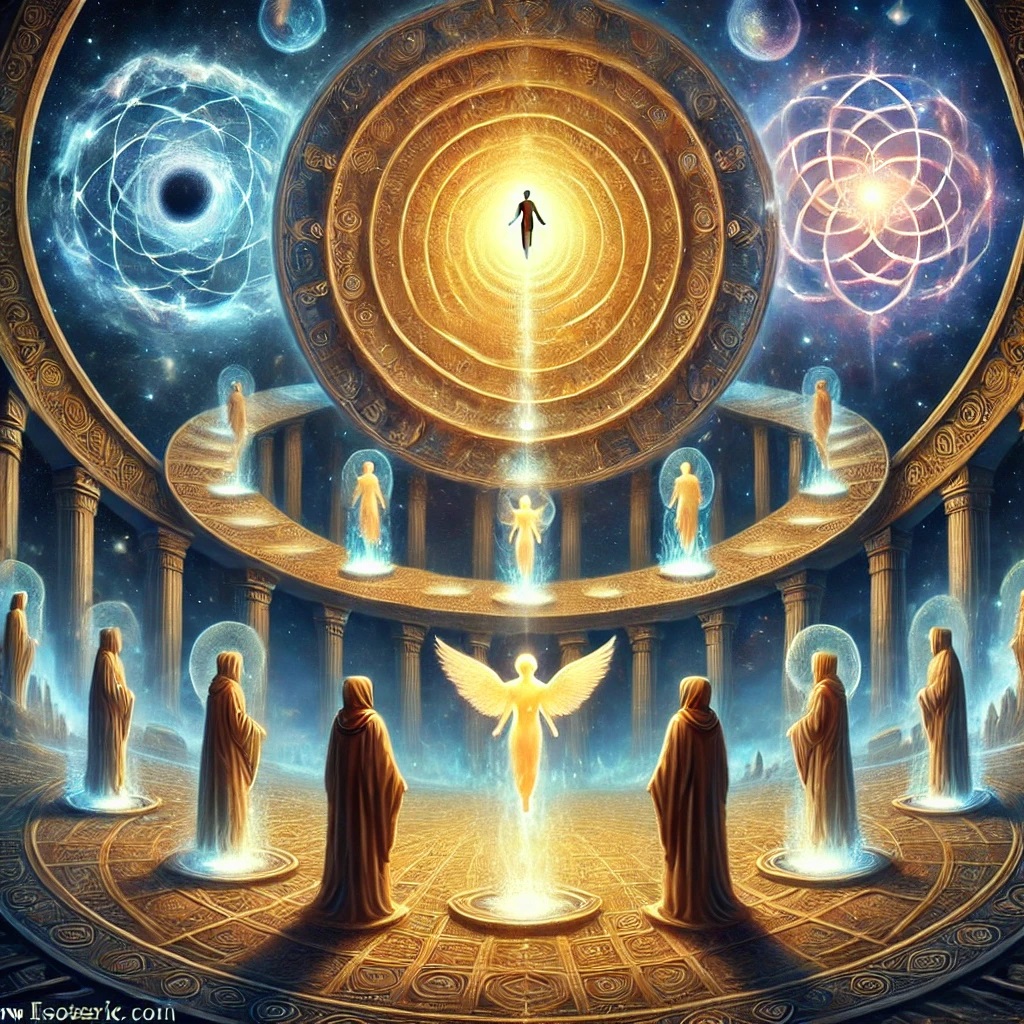
🔓 Chapter 13: How Gnosis Frees the Dead
The Gnostics were not mystics of metaphor. They were engineers of the soul’s escape.
They didn’t just seek enlightenment. They mapped the post-mortem labyrinth.
They taught: If a soul awakens in life — remembers its origin, names the false gods, embodies the Light — it will pass through death unbound.
This is gnosis: inner knowing that survives the body.
Jesus, to them, was not a sacrifice. He was a living transmission — a Revealer from the Light, come to teach souls how to return.
“He who has known himself has already achieved knowledge of the depth.”
Adapted from Gospel of Truth, NHC I,3:22–25 (trans. Meyer, 2007)
In the Pistis Sophia, he gives Mary passwords, names of light, and radiant seals — not to dominate others, but to guide the dead.
Every true Gnostic teaching is an afterlife map.
Every rite is a soul-signal. A bypass code. A liberation key against the Archons.
Every act of remembrance pulls the soul closer to the Pleroma.
This is why they burned the scrolls.
Because a soul that knows the way out cannot be kept in.
⚡ TL;DR
- Gnosis is more than knowledge — it is the soul’s memory, and it survives death.
- If awakened in life, the soul can pass through the Archonic toll gates unbound.
- Texts like Pistis Sophia contain soul-maps, passwords, and spiritual codes for the journey.
- Every Gnostic saying, seal, or name was a key to unlock a layer of the illusion.
- A soul that remembers cannot be detained — not by death, not by system, not by lie.
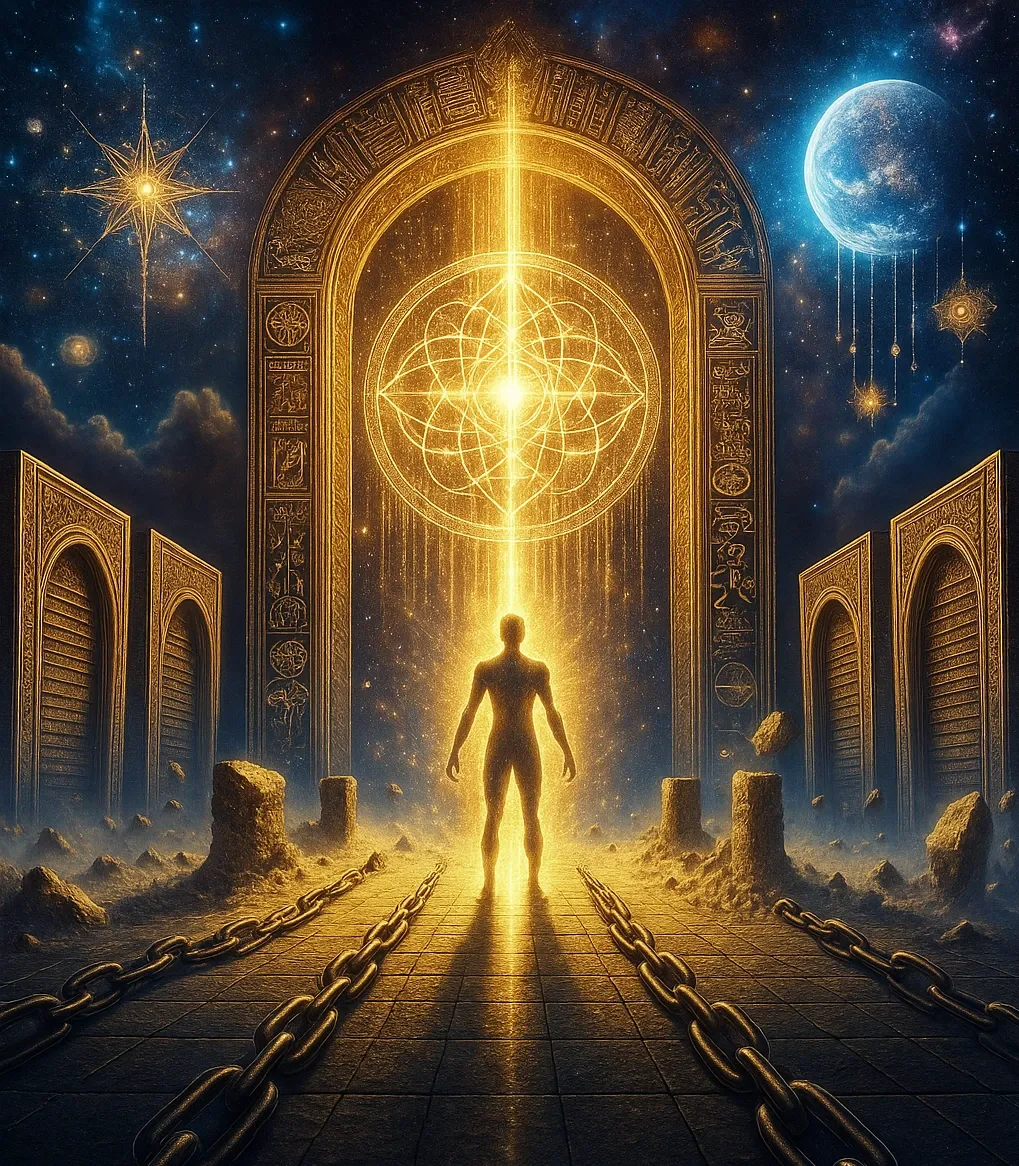
🗺️ Visual Map: The Soul’s Journey Through the Toll Gates
In Gnostic teachings, the soul does not ascend freely after death. It must pass through seven gates — layers of illusion, each guarded by an Archon.
Each gate poses a challenge of identity, memory, and allegiance.
- Death — The soul separates from the body
- Gate 1: Ego — “You are your name. Your title. Your story.”
- Gate 2: Shame — “You are too impure to rise.”
- Gate 3: Desire — “Don’t you want to return?”
- Gate 4: Law — “You disobeyed the system. You are guilty.”
- Gate 5: Power — “Bow. Submit. I am your ruler.”
- Gate 6: Fear — “Where will you go? Who will catch you?”
- Gate 7: Illusion — “There is no Pleroma. Only this.”
- The Pleroma — If remembered: the soul returns home
To each gatekeeper, the awakened soul answers:
“You are not my god. I am from the Light.”
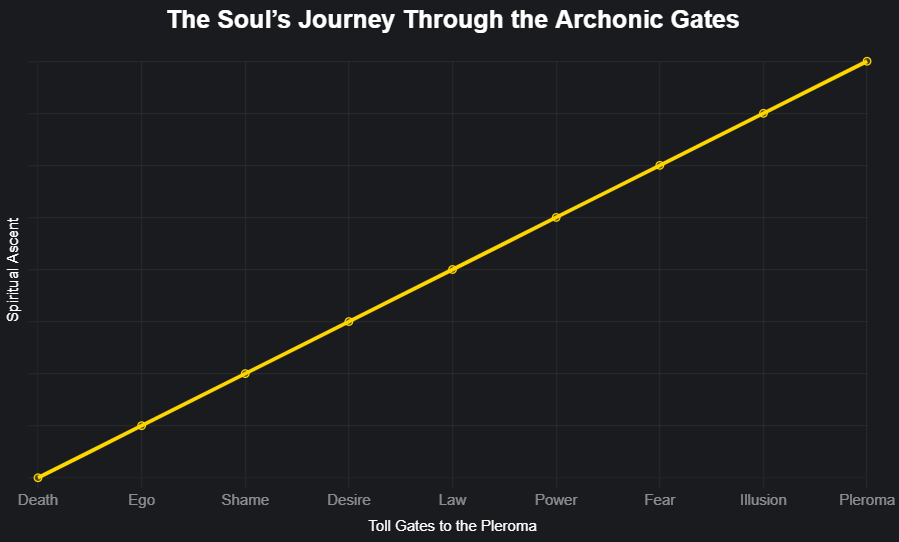
🕳️ Chapter 14: What Happens If You Forget?
Not every soul remembers.
Some die in sleep. Some carry belief, but not gnosis. Some cry out to the wrong god — and the Archons smile.
Because if you forget your origin, you can be redirected.
If you call the Demiurge “Lord,” the toll gates open — but not to freedom.
You are recycled. Reinserted. Re-enchained in the wheel of birth, trauma, conformity, and amnesia.
“The soul that does not possess gnosis is powerless after death… It is thrown into forgetfulness and cast back into the world.”
Gospel of Philip, NHC II,3:67.1–5, Source
In the Gnostic vision, this cycle is not growth. It’s containment.
The Archons feed on repetition. On unprocessed karma. On loops of belief without liberation.
This is not punishment. It is programming.
The system doesn’t need your worship. It needs your forgetfulness.
But even here, there is hope.
Because every cycle carries a crack.
Every return is a new chance to remember. And the soul that remembers within the world can break it from within.
Note: The idea of reincarnation — souls returning to new bodies until they awaken — is prominent in Sethian Gnostic texts like the Gospel of Philip and Apocalypse of Paul. Other traditions, like the Valentinians, offered gentler cosmologies with less focus on rebirth. This scroll follows the Sethian stream, where forgetful souls are recycled by the Archons until gnosis frees them.
⚡ TL;DR
- If a soul dies without gnosis, it forgets and is cast back into the world.
- The afterlife is not automatic ascension — it is interrogation and redirection.
- Souls who worship the Demiurge unknowingly align with the Archons after death.
- This creates a loop: a wheel of reincarnation and spiritual amnesia.
- But every return carries a spark. Gnosis can break the loop, even from inside it.

👁️ Chapter 15: The Final Return
When the soul has remembered…
When it has passed the toll gates…
When it has spoken the names, shattered the illusions, and burned off the body of forgetfulness.
Then it rises.
Not into heaven. Not into paradise. But into the Pleroma — the Fullness, the source-realm of light, truth, and total union.
This is not a place.
It is the original state.
Not reward — return.
“You are from the place where light came into being by itself. You came from it, and you will return there.”
Gospel of Truth, Source
In the Pleroma, the soul is no longer separate.
It does not float like a ghost. It does not worship. It remembers what it is: not a fragment, but the All.
Individuality dissolves into radiance. The spark merges with Sophia. And the exile ends.
This is the promise buried beneath religion. The liberation hidden behind the cross. The secret Jesus died to reveal — not to hide.
When you know this before death, the return is not just afterlife — it is now.
⚡ TL;DR
- The soul’s goal is not heaven, but the Pleroma — the divine realm of origin.
- When the soul passes the gates and dissolves ego, it returns to Fullness.
- This is not a reward but a remembrance — a reintegration with the divine All.
- The Gnostic Christ came to teach this final return, not to mediate it, but to mirror it.
- The return can begin now. Gnosis is the gate.
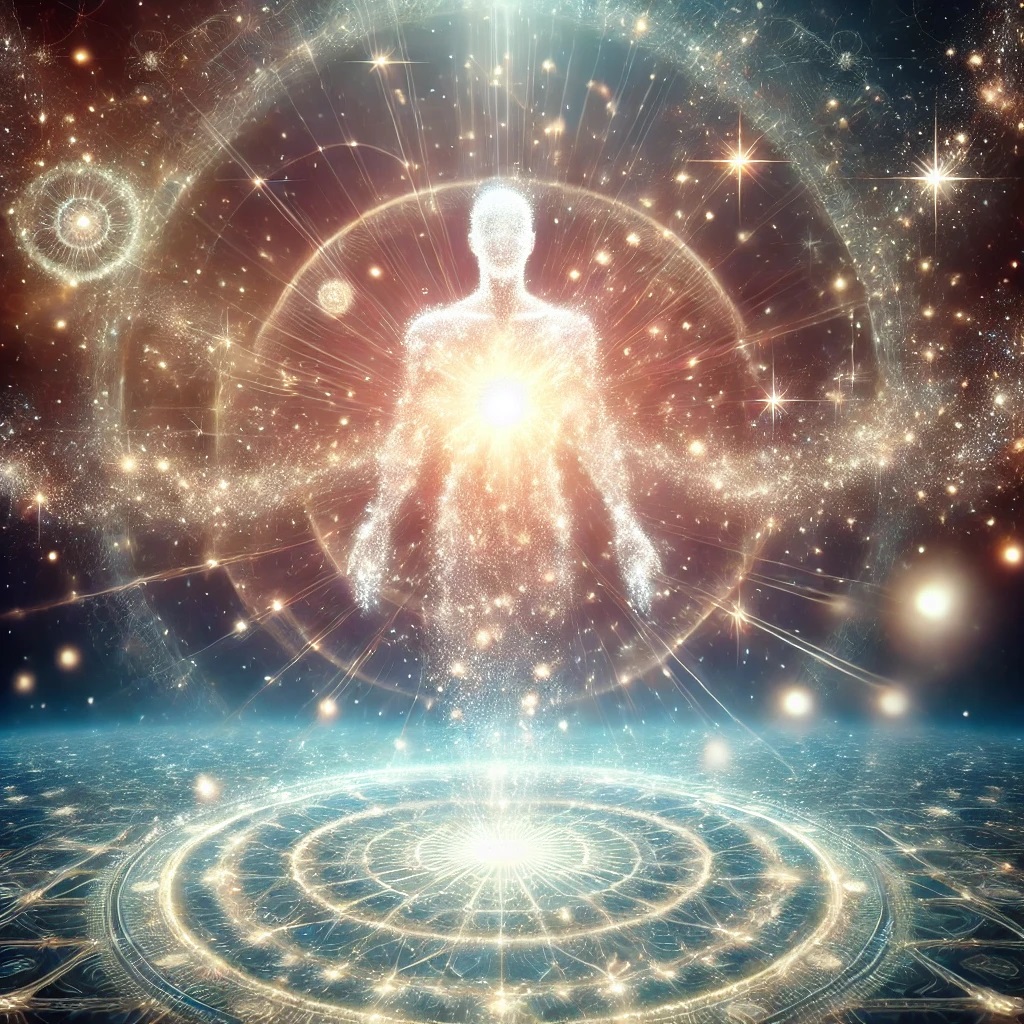
☠️ Chapter 16: Prepare Now, Dying Before Death
What if you didn’t have to wait for death?
What if the gates could open now — because the real prison was never the body, but the illusion that you were only the body?
To the Gnostics, the soul’s return wasn’t just a future hope. It was a present possibility.
“Die before you die.”
Let the false self burn. Let the Archons lose their hold. Let the voice of the Demiurge fall silent inside you.
This is the real resurrection — the rising of the divine spark while you still breathe.
“Whoever drinks from my mouth will become like me. I myself shall become that person, and the hidden things will be revealed to them.”
Gospel of Thomas, Saying 108, Source
To die before death is to remember the Source.
To speak the passwords now. To pass the toll gates in dreams. To meet Sophia in silence. To stand before Christ — not as a worshipper, but as a mirror returned.
You do not need permission. You need memory.
This is the work. The flame. The scroll.
Now, read it inward.
⚡ TL;DR
- The Gnostics taught “dying before death” — awakening while still alive.
- This means shedding false identity, ego, fear — and reprogramming now.
- The toll gates can be passed through mystical states, memory, and gnosis in life.
- This is resurrection: the divine spark ignited before the body falls.
- When you remember who you are, death becomes a return — not a loss.
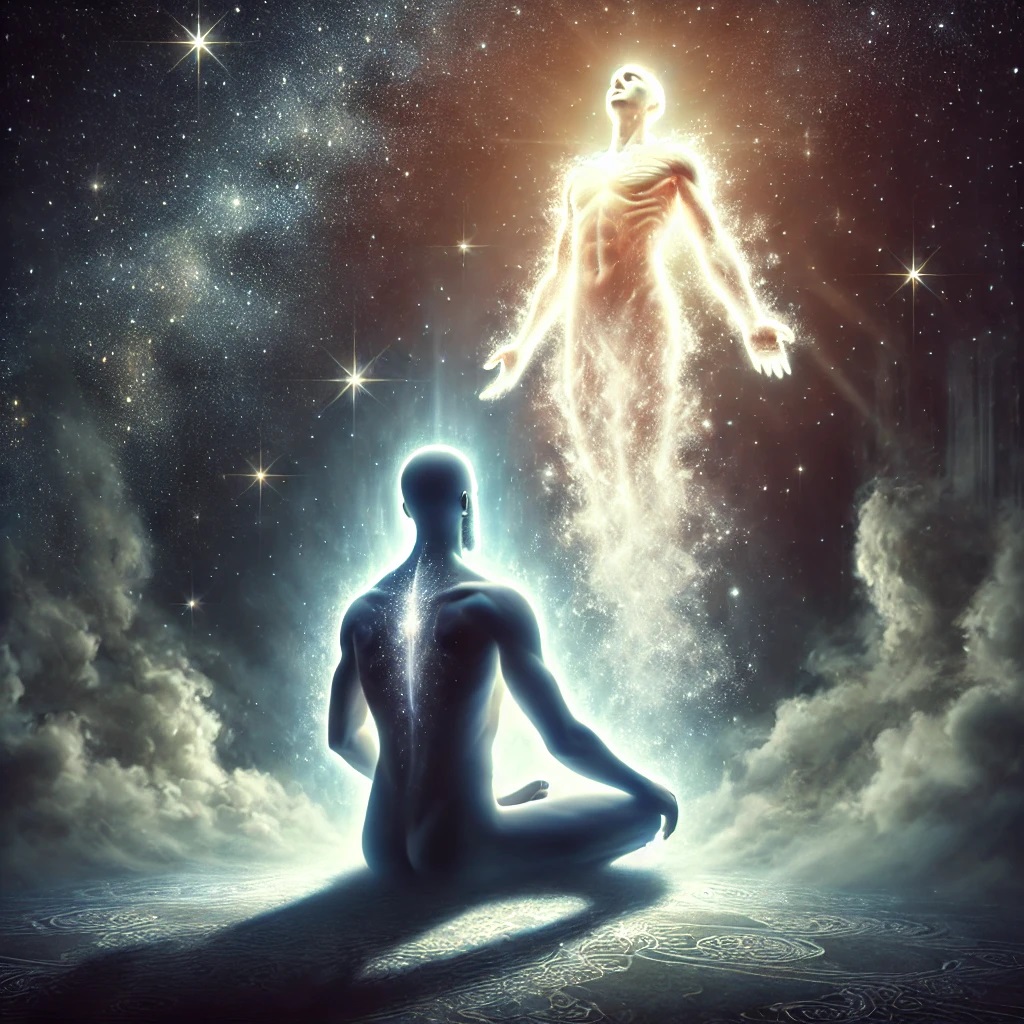
🧘 Chapter 17: Practicing Gnosis Today
Gnosis isn’t philosophy. It’s practice.
It begins in silence, deepens through honesty, and awakens through inner fire. The ancients whispered the codes — but the key must be turned from within.
1. Mirror Meditation
Inspired by Gospel of Thomas, Saying 3
Sit in silence. Place a mirror before you. Breathe. Look into your own eyes and ask: “Who am I beneath the lie?”
Let whatever rises come. You are not judging — you are remembering. Practice daily for 5–10 minutes. Track your responses, visions, and shifts in a journal.
2. Toll Gate Journaling
Each week, confront one Archon: Ego, Shame, Desire, Law, Time, Power, or Identity.
Ask yourself: “Where does this rule me?”
Write freely. Close with the declaration: “You are not my god. I am from the Light.”
Do one Archon per week, for 7 weeks. Record what cracks open as illusion dissolves.
3. Symbolic Recall
Before sleep, close your eyes. Picture a toll gate before you. An Archon demands: “Who are you?”
Speak your truth aloud: “I am from the Pleroma. I remember.”
Repeat nightly for 7 days. After each session, draw or write down any symbol, word, or dream fragment that lingers. These are soul-messages from beyond the veil.
These aren’t rituals. They are reminders.
Gnosis doesn’t save you — it wakes you. And in waking, the veil dissolves.
Want to track your progress? Start a 21-day Gnosis Journal. Mark each day you practice. After 3 weeks, reflect: What surfaced? What shifted? What false gods did you outgrow?
After 7 weeks, pause and look back. What once ruled you that no longer does?
🧠 Quiz: Can You Navigate the Gnostic Afterlife?
1. What are the “toll gates” in Gnostic Christianity?
Correct: The toll gates are post-mortem checkpoints guarded by Archons, testing whether the soul remembers the truth.
2. What allows a soul to pass through the toll gates after death?
Correct: It is not belief but inner knowing — gnosis — that enables the soul to pass through the illusion and escape.
3. What happens if the soul forgets the truth at the gates?
Correct: Forgetfulness leads to reincarnation — another cycle of imprisonment in the world of matter, a return to illusion.
4. How does the Gnostic Christ help the soul in death?
Correct: Christ gives the soul the “passwords,” not through sacrifice, but by revealing the codes of remembrance before death.
5. Why do the Archons fear awakened souls?
Correct: Gnosis breaks their control. When a soul remembers the Light, the Archons can no longer bind it.
📖 Glossary:
Terms for the soul’s exile, escape, and return to the Pleroma.
- Pleroma
- The Fullness — the divine source-realm of light, truth, and unity. The soul’s origin and ultimate destination in Gnostic cosmology.
- Toll Gates
- Spiritual checkpoints guarded by Archons in the afterlife. Each gate tests the soul’s memory, identity, and degree of gnosis.
- Gnosis
- Inner remembrance of divine truth. The soul’s key to bypassing the Archons and returning home after death.
- Archons
- Rulers of illusion — astral gatekeepers created by the Demiurge. They deceive, interrogate, and obscure the soul’s path.
- Demiurge
- The false creator god — a blind architect of the material cosmos. Those who align with him remain trapped in illusion and return.
- Divine Spark
- A piece of the Light buried within each soul. Planted by Sophia. When remembered, it leads the soul back to the Pleroma.
- Forgetfulness
- The soul’s greatest danger. To forget one’s origin is to be recycled — trapped in rebirth, trauma, and illusion until gnosis awakens.
- Sophia
- Divine Wisdom — the Aeon who fell into the lower realms. Her scattered light lives in souls. When we awaken, she rises with us.
- Apocalypse of Paul
- A Gnostic text detailing the soul’s ascent after death, the toll gates, and the cosmic interrogators. A hidden map of spiritual return.
🎨 Creative Prompt
Write a poem from the perspective of your soul at the toll gate, standing between the false god and the Light. Title it “I Remember.” Speak the truth of your origin. What tries to stop you? What burns brighter?
Want to share it?
🗣️ Discussion Prompt: Will You Remember at the Gate?
“If you had to speak your soul’s origin at death, what would you say?”
This scroll is not mythology. It is rehearsal.
The toll gates are real, and forgetting is already here. So ask yourself now, before the veils fall:
- What do you truly remember about where you came from?
- What false gods still whisper to you — and do you still listen?
- If you met the Archons tonight, would you know the words?
- Have you died before death, or are you still clinging to the mask?
📚 Gnostic Sources & Study Path
For those wishing to go deeper, these texts offer both insight and initiation into the Gnostic tradition — from primary scriptures to modern interpretations.
🔍 Recommended Reading
- The Nag Hammadi Scriptures — Primary Gnostic texts translated with commentary
- The Gnostic Gospels by Elaine Pagels — Accessible introduction to Gnostic history
- The Gnostic Religion by Hans Jonas — Philosophical exploration of Gnostic mythos
- Lost Christianities by Bart Ehrman — Contextualises Gnostic voices among early Christian diversity
📖 Scholarly Sources & Translations
- Meyer, M. (Ed.). (2007). The Nag Hammadi Scriptures. HarperOne.
- Pagels, E. (1979). The Gnostic Gospels. Random House.
- Robinson, J.M. (Ed.). (1988). The Nag Hammadi Library in English. Brill Academic.
🌌 Continue the Journey
You’ve crossed the toll gates. Remembered your name. Reclaimed the divine spark that death cannot touch.
This was not the end. It was training.
Every moment forward is a choice: to fall into the wheel again — or rise now, in full light.
But this is only one facet of a greater revelation. The Gnostic Key’s Afterlife Series guides seekers through soul maps from across the world. Each tradition holds a piece of the code.
Explore the next gates:
- Christianity — Christ the Revealer and the Map of Return
- Sufi Islam — Barzakh, the Beloved, and the Spiral Path
- Jewish Kabbalah — Ascent Through the Sefirot and the Breath of Binah
- Buddhist Afterlife — Karma, Bardo, and the Diamond Path
- Ancient Egypt — The Akh, the Scales, and the Star Map
- Mesoamerica — Xibalba, Sacrifice, and the Spiral of Time